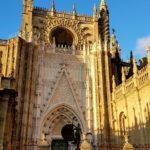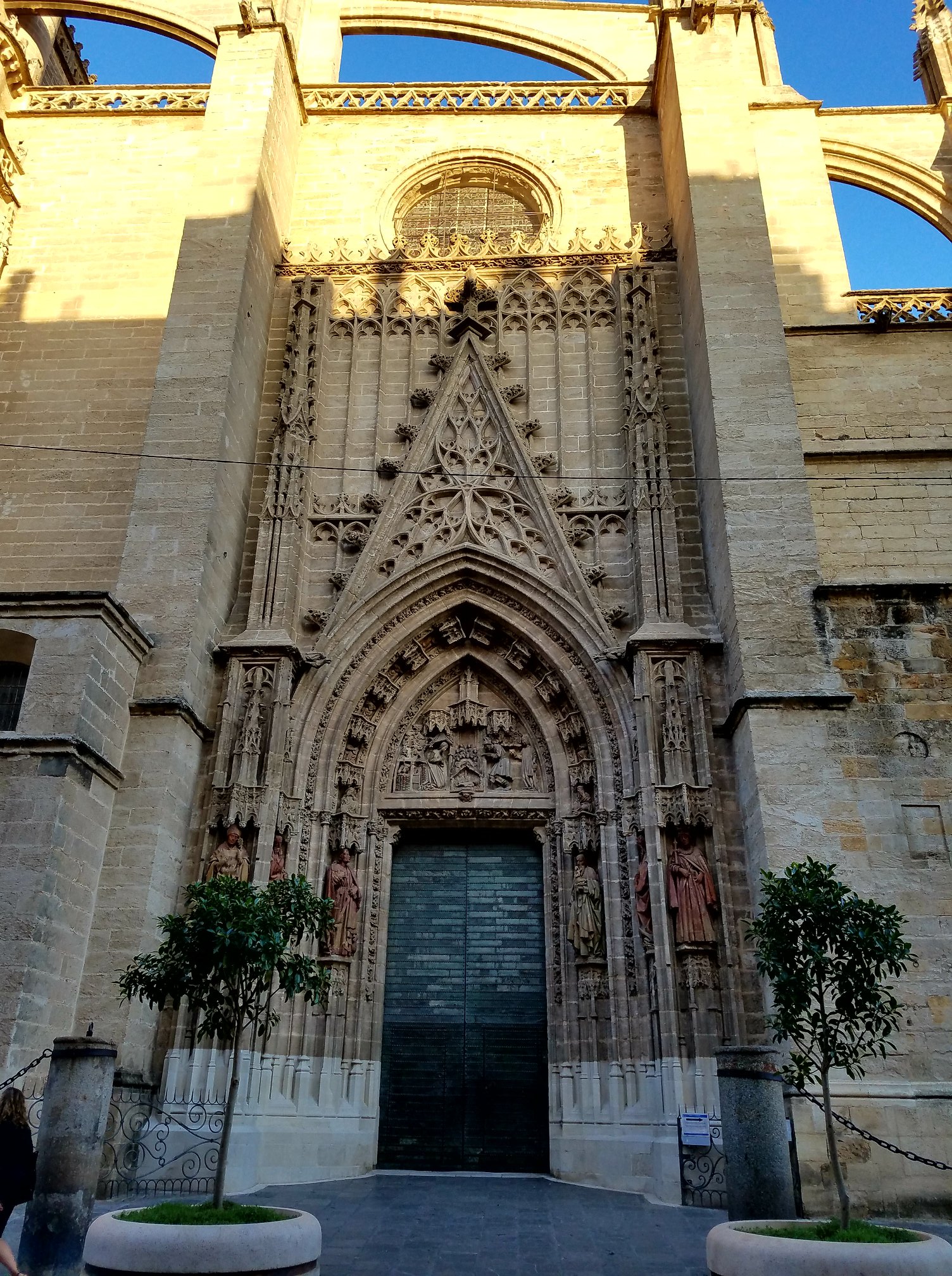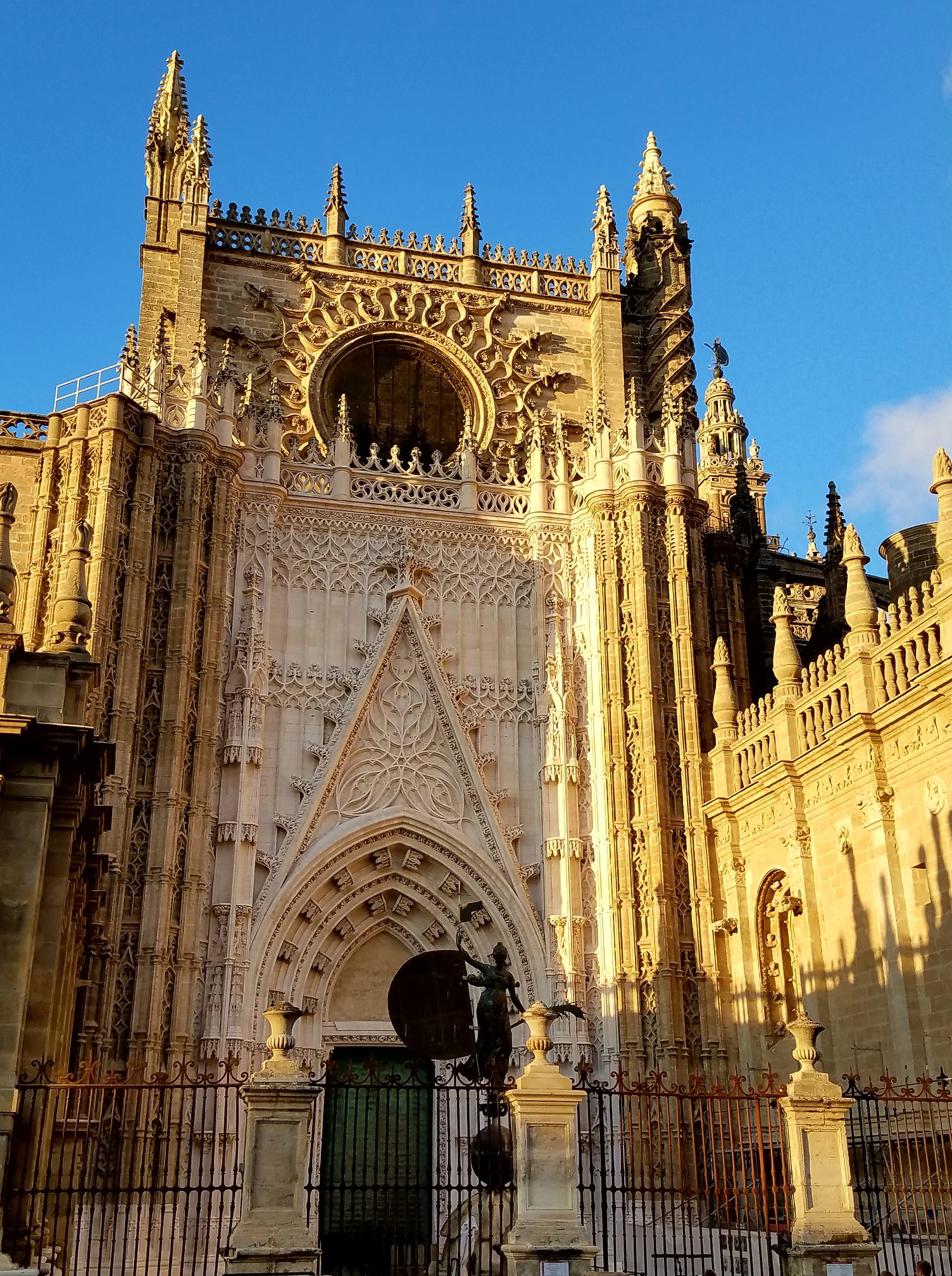 There are seven portals that grant access to the largest Gothic Cathedral in the world, “Santa Maria de la Sede”, the Cathedral of Seville, Spain. We are including pictures of three portals we had the opportunity to photograph, the “Puerta de San Cristóbal” or also known as “del Príncipe”, which is located on the south facade and located on the western facade, we find the “Puerta del Nacimiento” and the “Puerta de la Asunción”. The other portals (not shown) are: the “Puerta de Palos” and the “Puerta de las Campanillas” on the Eastern facade, the “Puerta del Bautismo”, located on the western facade and the “Puerta de la Concepción” that is on the northern facade. We share for each photo a some information of these three portals shown.
There are seven portals that grant access to the largest Gothic Cathedral in the world, “Santa Maria de la Sede”, the Cathedral of Seville, Spain. We are including pictures of three portals we had the opportunity to photograph, the “Puerta de San Cristóbal” or also known as “del Príncipe”, which is located on the south facade and located on the western facade, we find the “Puerta del Nacimiento” and the “Puerta de la Asunción”. The other portals (not shown) are: the “Puerta de Palos” and the “Puerta de las Campanillas” on the Eastern facade, the “Puerta del Bautismo”, located on the western facade and the “Puerta de la Concepción” that is on the northern facade. We share for each photo a some information of these three portals shown.
 From the 19th century, the “Puerta de la Asunción” is the main entry to the Cathedral, which connects with the main nave. It was built between 1829 and 1833, largely under the direction of the architect of the Cathedral Fernando de Rosales.
From the 19th century, the “Puerta de la Asunción” is the main entry to the Cathedral, which connects with the main nave. It was built between 1829 and 1833, largely under the direction of the architect of the Cathedral Fernando de Rosales.
 This portal, popularly known as “San Miguel”, is identical in composition to Portal of the Baptism and only distinguished by its sculptures. The relief of the tympanum represents the Birth of Christ and is the work of Mercadante de Bretaña. The sculptures of the archivolts are attributed to Pedro Millán, as well as those of the Portal of the Baptism. The latter, except for the figures of the prophets in the lower part, could be from the period in which the architecture of these covers was made, that is to say before 1450. The figures of saints on the sides, also made by Mercadante, are: on the jambs are the four Evangelistas and on the outside “San Laureano” and “San Fernando”.
This portal, popularly known as “San Miguel”, is identical in composition to Portal of the Baptism and only distinguished by its sculptures. The relief of the tympanum represents the Birth of Christ and is the work of Mercadante de Bretaña. The sculptures of the archivolts are attributed to Pedro Millán, as well as those of the Portal of the Baptism. The latter, except for the figures of the prophets in the lower part, could be from the period in which the architecture of these covers was made, that is to say before 1450. The figures of saints on the sides, also made by Mercadante, are: on the jambs are the four Evangelistas and on the outside “San Laureano” and “San Fernando”.
 This portal, known as “Puerta de San Cristóbal” or “del Príncipe”, is located on the south facade, opposite to the Lonja, the current “Archivo de las Indias”. It communicates with the south arm of the transept, and has no sculptural ornamentation. It was built between 1887 and 1895 under the direction of the architect Fernández Casanova.
This portal, known as “Puerta de San Cristóbal” or “del Príncipe”, is located on the south facade, opposite to the Lonja, the current “Archivo de las Indias”. It communicates with the south arm of the transept, and has no sculptural ornamentation. It was built between 1887 and 1895 under the direction of the architect Fernández Casanova.
